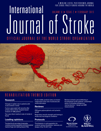Remote ischemic perconditioning in thrombolysed stroke patients: Randomized study of activating endogenous neuroprotection – design and MRI measurements
Abstract
Background
Intravenous administration of alteplase is the only approved treatment for acute ischemic stroke. Despite the effectiveness of this treatment, 50% of patients suffer chronic neurological disability, which may in part be caused by ischemia-reperfusion injury. Remote ischemic perconditioning, performed as a transient ischemic stimulus by blood-pressure cuff inflation to an extremity, has proven effective in attenuating ischemia-reperfusion injury in animal models of stroke. Remote ischemic perconditioning increases myocardial salvage in patients undergoing acute revascularization for acute myocardial infarction. To clarify whether a similar benefit can be obtained in patients undergoing thrombolysis for acute stroke, we included patients from June 2009 to January 2011.
Aim and design
- to estimate the effect of remote ischemic perconditioning as adjunctive therapy to intravenous alteplase of acute ischemic stroke within the 4-h time window and
- to investigate the feasibility of remote ischemic perconditioning performed during transport to hospital in patients displaying symptoms of acute stroke.
Patients are randomized to remote ischemic perconditioning in a single-blinded fashion during transportation to hospital. Only patients with magnetic resonance imaging-proven ischemic stroke, who subsequently are treated with intravenous alteplase, and in selected cases additional endovascular treatment, are finally included in the study.
Study outcomes
Primary end-point is penumbral salvage. Penumbra is defined as hypoperfused yet viable tissue identified as the mismatch between perfusion-weighted imaging and diffusion-weighted imaging lesion on magnetic resonance imaging scans. Primary outcome is a mismatch volume not progressing to infarction on one-month follow-up T2 fluid attenuated inversion recovery. Secondary end-points include: infarct growth (expansion of the diffusion-weighted imaging lesion) from baseline to the 24-h and one-month follow-up examination. Infarct growth inside and outside the acute perfusion-weighted imaging–diffusion-weighted imaging mismatch zone is quantified by use of coregistration. Clinical outcome after three-months. The influence of physical activity (Physical Activity Scale for the Elderly score) on effect of remote ischemic perconditioning. Feasibility of remote ischemic perconditioning in acute stroke patients.
Summary
This phase 3 trial is the first study in patients with acute ischemic stroke to evaluate the effect size of remote ischemic perconditioning as a pretreatment to intravenous alteplase, measured as penumbral salvage on multimodal magnetic resonance imaging and clinical outcome after three–months follow-up.




